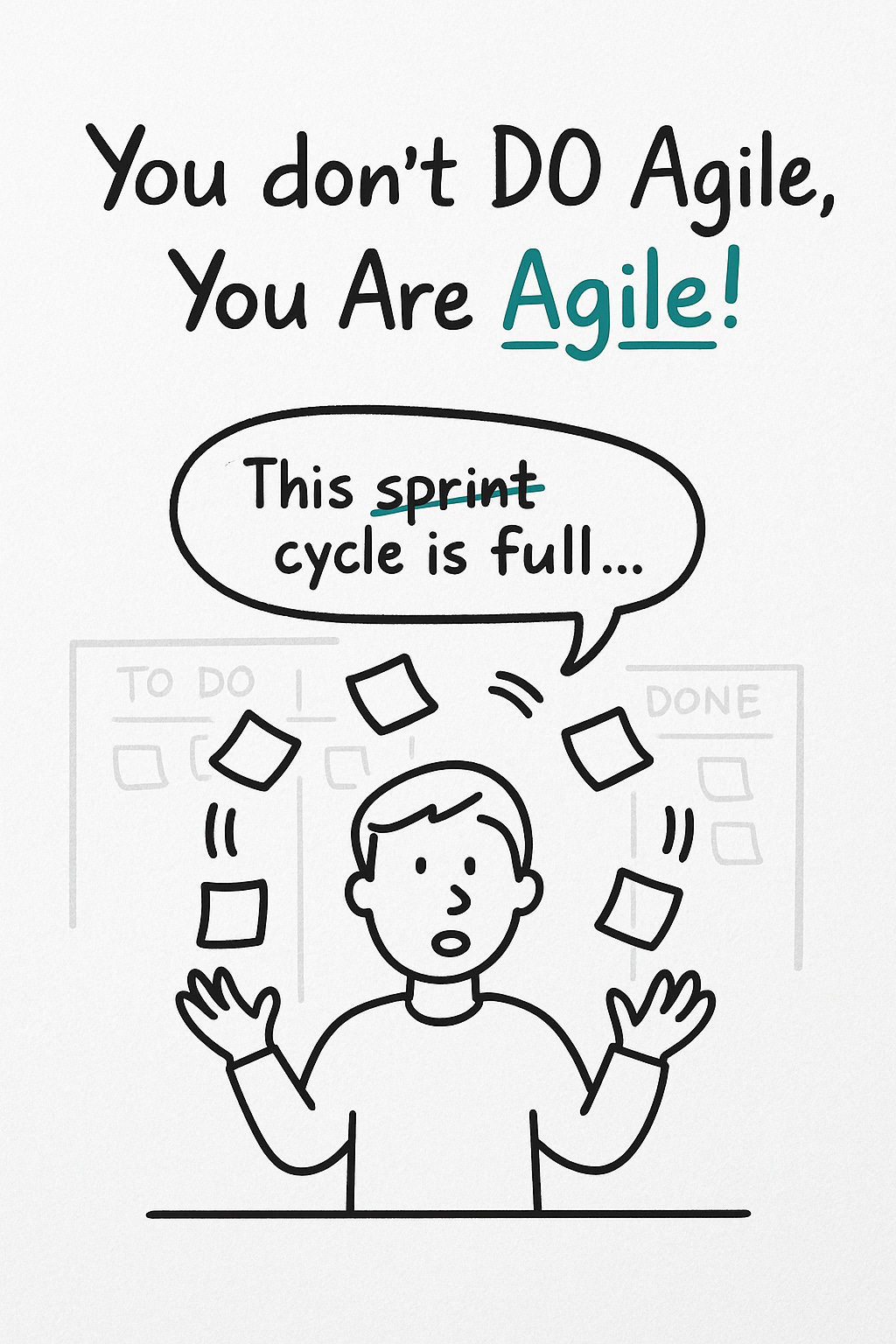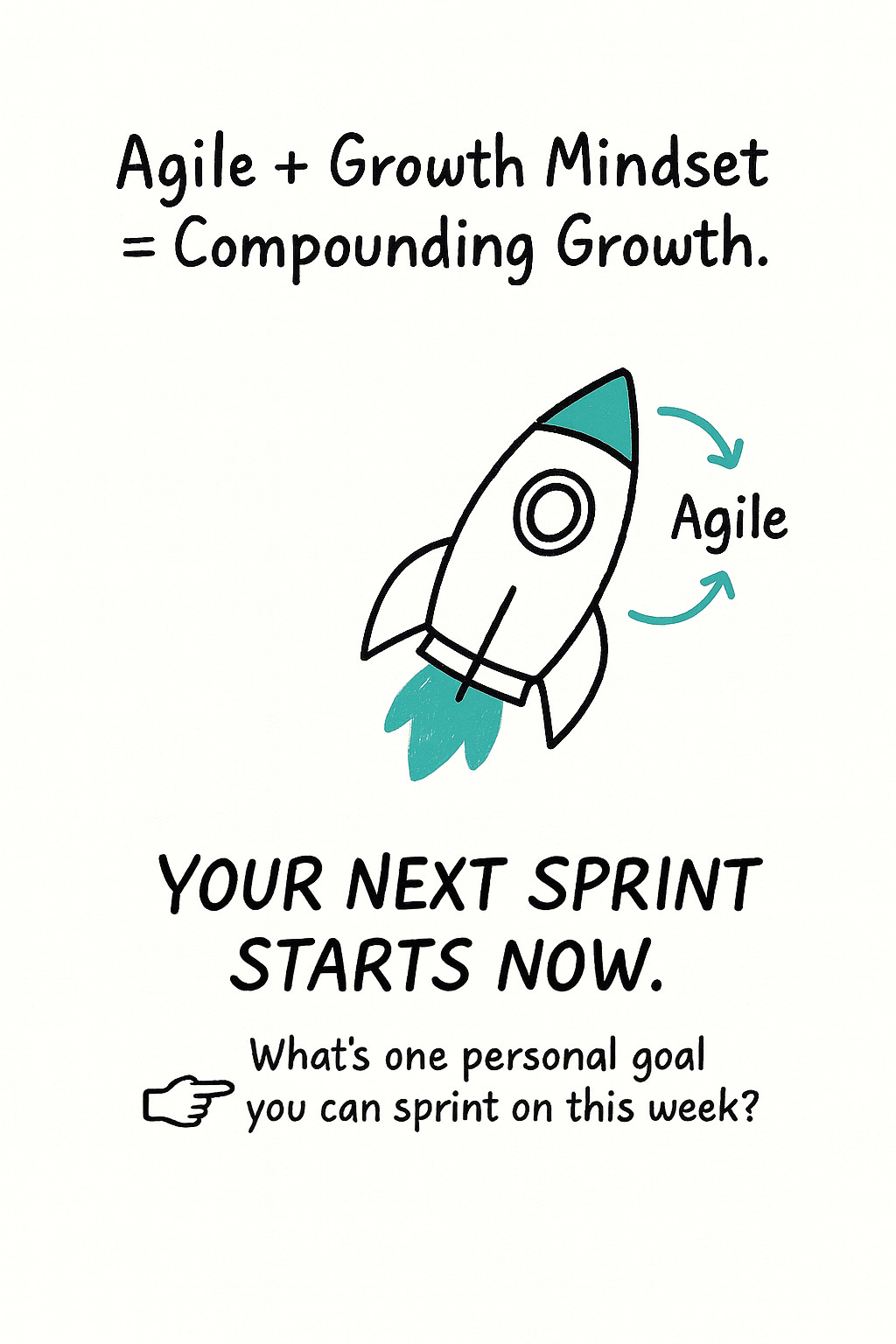Be Agile, Grow Agile: How Sprint Cycles Can Transform Your Personal Growth
Discover how Agile principles and the growth mindset combine into a life operating system for continuous improvement. Learn how to plan goals, embrace iteration, and run personal sprints that compound
“You don’t DO Agile, You Are Agile!”
For years, I thought Agile was just a fancy project management process.
Stand-ups, sprints, backlogs. The buzzwords piled up while the work slowed down. You can imagine my frustration when the answer to a request was, “This sprint cycle is full. We can only consider your feature in the next or next-next cycle.” Wasn’t Agile supposed to mean quick?
This week, in my BCG DTCM program, a lightbulb went on: Agile isn’t a process. Agile is a mindset.
And that shift changes everything. Because the same principles that power the world’s best product teams also apply to something far more personal: our own growth. Agile and the growth mindset share the same DNA. They embrace uncertainty, thrive on experimentation, and see iteration as the path forward.
The truth? Agile isn’t just for software. It’s a philosophy for personal growth and lifelong learning — one sprint, one iteration, one breakthrough at a time.
The Core Concept: Agile Mindset for Personal Growth
Here’s the uncomfortable truth: most of us treat growth like a linear project plan with fixed milestones, rigid deadlines, and a vague hope that if we just follow the “plan,” we’ll arrive at success. But life doesn’t work that way.
Agile reminds us: Agile ≠ process; Agile = mindset.
And so is growth. Growth ≠ perfection; growth = compounding improvement.
Think of Agile as an operating system for how we grow. It’s not about “doing” Agile practices. It’s about being adaptive, iterative, and willing to see every challenge as a chance to test, learn, and evolve.
1. Linking Agile’s 4 Core Values to Growth Mindset
The four values from the Agile Manifesto map beautifully to how we can grow as humans:
Customer Focus: Customer Collaboration > Contract Negotiation
Growth is co-created. Just like product teams need customers, you need mentors, peers, and communities to shape your journey. You don’t grow in isolation; you grow in conversation.
Output Orientation: Working Output > Comprehensive Plans
Perfection is a trap. Progress is the goal. Celebrate “done” over “perfect.” Small wins compound into momentum, while endless planning compounds into paralysis.
Empowering Teams: Individuals & Interactions > Processes & Tools
Growth is a team sport. Feedback from a friend, advice from a mentor, or accountability with a partner is worth more than any self-help app or productivity hack.
Adaptability in Uncertain Context: Responding to Change > Following a Plan
Life is unpredictable. Your career pivot, fitness journey, or side hustle will never unfold exactly as planned. Pivoting isn’t failure; it’s agility.
2. Goal Planning the Agile Way
Here’s where it gets practical: treat your life like a backlog.
Initiatives = Life Goals (e.g., becoming healthier, building a personal brand, career pivot).
Epics = Key Areas (fitness, learning, relationships, career).
Stories = Tasks & Subtasks (daily habits, micro-actions, rituals).
By breaking your growth into these layers, you gain clarity, focus, and measurable progress. Big goals stop being overwhelming when you slice them into achievable sprints.
3. The Agile Growth Cycle (Scrum + Growth Mindset)
Agile rituals aren’t just for software teams, they’re a framework for how to live and grow. When combined with Carol Dweck’s growth mindset, they become a loop of compounding improvement:
Sprint Planning + The Power of Yet
Decide what you’ll tackle in the next 1–2 weeks. Can’t nail it yet? That’s the point. Yet keeps the door open.
Daily Stand-Up + Effort Matters
Ask yourself each morning: What did I do yesterday? What will I do today? What’s blocking me?
The growth mindset reminds us: Effort isn’t optional. It’s the multiplier of results.
Backlog Refinement + Embracing Challenges
Regularly break down your big goals into smaller, actionable tasks. Challenges aren’t roadblocks. They’re reps for your brain.
Sprint Review + Accountable Praise
Share progress with someone you trust. Praise the effort and the strategy, not just the outcome. Or go full Rose and thank yourself for showing up.
Retrospective + Learning from Mistakes
Ask: What worked? What didn’t? What’s next? Mistakes aren’t identity. They’re data. The brain grows when we process errors and adjust.
The result: an iterative loop that’s both structured (Agile) and adaptive (Growth Mindset). One sprint at a time, you stop obsessing about perfection and start compounding progress.
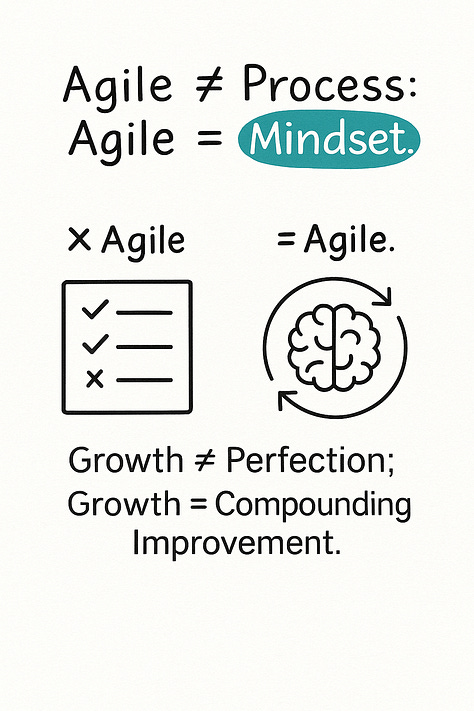
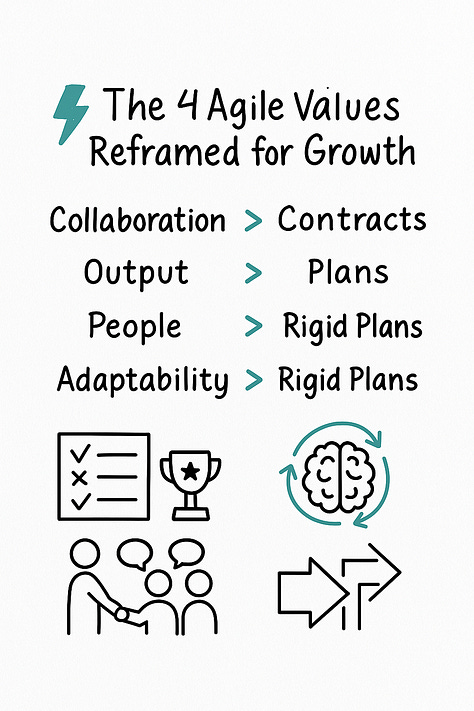
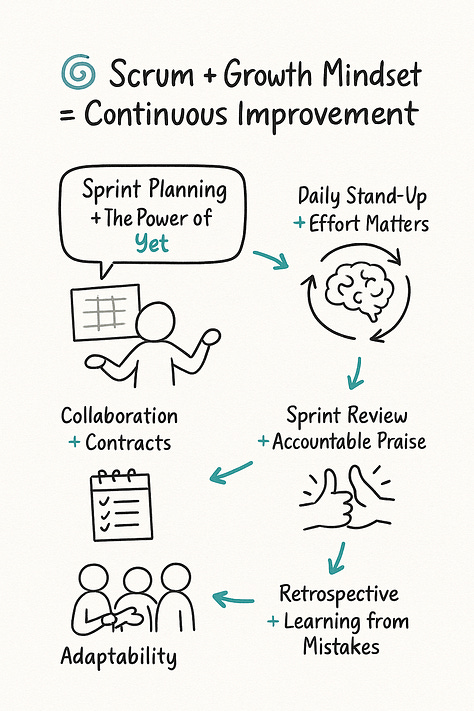
Final Thoughts
Agile isn’t just a buzzword for tech teams, and the growth mindset isn’t just a TED Talk for students. Together, they form a life operating system for continuous improvement. The formula is simple but profound:
Agile + Growth Mindset = Compounding Growth.
Because here’s the thing: growth isn’t about doing Agile. It’s about being Agile in how you live, how you learn, and how you adapt. The people who thrive aren’t the ones with perfect plans. They’re the ones who know how to pivot, reflect, and sprint again.
So here’s my challenge to you:
👉 What’s one personal goal you can sprint on this week?
Write it down. Break it into tasks. Run your first sprint. And if you’re brave enough, share your reflections or Agile-growth hacks, not just to inspire others, but to keep yourself accountable.
Your next sprint starts now.

